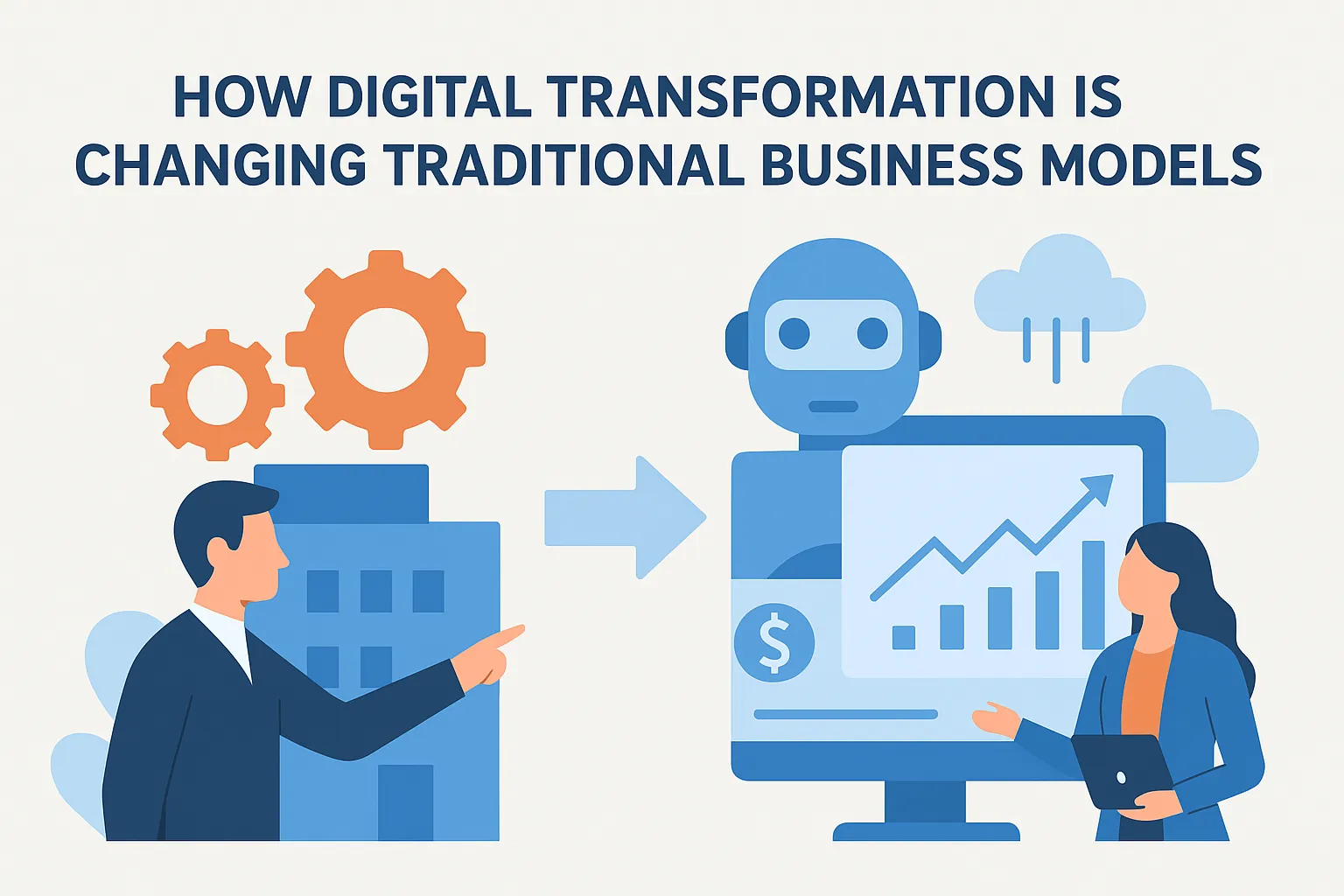Digital Transformation: What It Really Means
Digital transformation is the strategic use of modern technologies to redesign how a business creates value, operates, and competes. It’s not just about going digital — it’s about reinventing business processes, improving customer experience, and achieving agility through technology.
Why Digital Transformation Is Reshaping Business Models
Modern technologies reduce operational costs, enable faster delivery, and provide deep customer insights. Businesses are moving from one-time product sales to continuous, data-driven relationships that improve customer lifetime value.
From Products to Services (Servitization)
Companies are now offering value-added services instead of standalone products, creating recurring revenue streams.
- Predictive maintenance services and smart monitoring systems.
- Usage-based pricing instead of flat-rate models.
- Product-as-a-Service models for ongoing customer engagement.
Rise of Subscriptions and Recurring Revenue
Subscription models allow consistent cash flow and stronger customer relationships.
- Software as a Service (SaaS) replacing perpetual licenses.
- Educational and media platforms offering premium memberships.
- Retail brands introducing “subscribe & save” models.
Platforms, Marketplaces, and Ecosystems
Digital platforms connect producers and consumers directly, creating ecosystems that scale quickly.
- Marketplaces enabling peer-to-peer commerce.
- APIs allowing external developers to extend platform capabilities.
- Collaborations that integrate payments, logistics, and rewards systems.
Direct-to-Customer (D2C) Model
Digital channels empower brands to sell directly, gather insights, and build loyalty.
- Brand-owned eCommerce sites and apps.
- Personalized campaigns using customer data.
- Integrated digital and offline experiences (omnichannel).
Data-Driven Decision Making
Businesses are leveraging analytics and AI to make smarter, faster decisions.
- Customer behavior analytics for personalization.
- Predictive insights for better forecasting.
- Data dashboards that improve transparency and agility.
Automation and AI in Operations
Automation and artificial intelligence are optimizing every part of business — from production to customer support.
- Chatbots providing 24/7 assistance.
- Automated workflows improving efficiency.
- AI models forecasting sales and reducing human error.
Outcome-Based and Value-Based Pricing
Companies are shifting toward performance-driven models where customers pay based on outcomes, not ownership.
- Pay-per-use or pay-per-performance billing.
- Contracts based on measurable results.
- Shared savings and efficiency-based partnerships.
Cybersecurity and Customer Trust
With greater digital adoption, security and privacy are now integral parts of the business model.
- Stronger data protection and encryption standards.
- Transparent privacy policies building customer confidence.
- Compliance with global data regulations.
Key Capabilities for Digital-Ready Businesses
To sustain transformation, businesses must invest in people, technology, and agile systems.
- Data-driven decision-making culture.
- Cross-functional collaboration between business and IT teams.
- Continuous innovation through small, fast iterations.
Getting Started: A Simple Roadmap
Adopting digital transformation doesn’t happen overnight — start small and scale strategically.
- Identify key customer pain points to solve digitally.
- Build a digital MVP to test your concept.
- Automate one manual process to save time.
- Use analytics to track performance and adapt quickly.
Conclusion
Digital transformation is more than technology — it’s about redefining business for a connected world. Companies that embrace agility, automation, and data will thrive, while those that resist will struggle to stay relevant.
